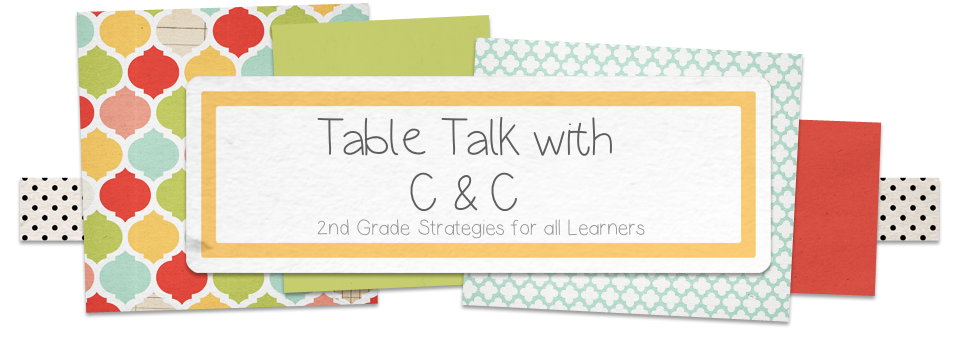This summer I have been tutoring one of my favorite 2nd grade students. I only get to work with him for a few more weeks and then he will be starting 3rd grade at our 3-5 building. {Sad Face} Anyhow, I have been doing a heavy focus on nonfiction reading and finding topics of interest to him. This week we are reading a reading a-z book called Deep in the Ocean. My little guy just got back from a vacation from Fort Lauderdale, so I figured a topic about the ocean would be perfect!
I have been doing my own "book study" or summer reading with Reality Checks-Teaching Reading Comprehension with Nonfiction K-5 by Tony Stead. This is a great book that provides many examples of what students struggle with while reading nonfiction, strategies of how to teach for deeper understanding of nonfiction, and it also provides many examples of organizers to use to facilitate higher level comprehension.
Often times, we as teachers, find ourselves teaching nonfiction in the most literal way-"finding information." Stead shares with you real life classroom examples of how to teach nonfiction comprehension through literal understandings {getting the facts, retelling, unknown vocabulary and concepts}, interpretive understandings {inferring and making connections}, evaluative understandings {reading between the lines}, and visualization {comprehension beyond words, guided reading and assessment, frame work for teaching}.
I started with using the RAN strategy {Reading and Analyzing Nonfiction}. This is an upgrade from the typical KWL by Donna Ogle. While the KWL helps students develop literal comprehension with information texts, it solely relies on the students' background knowledge, which may not always be correct. Students come with different experience and background which they may know little about a topic or have misconceptions. The idea of "What I want to know" in the KWL is very ambiguous and often students come up with ideas that are offtrack or irrelevant which makes it difficult for teachers to answer their wonderings.
The RAN strategy offers some similar yet concrete ways to help our little learners gain a better understanding of how to interpret and connect to informational texts. The RAN strategy incorporates five categories: "What I Think I Know," "Confirmed-"Yes I was Right!" "Misconceptions," "New Information" and "Wonderings."
What I Think I Know: Allows learner to access their background knowledge in which they think is right about a topic. Yet, has an understanding that not all background knowledge is accurate.
Confirmed-Yes I was Right! : Allows learners to confirm what is right while reading. It's important to take time and discuss that we thought was right from "What I Think I Know." This also allows students to understand that what we thought we knew based on our prior knowledge may be different than the facts shared by the author. Students can confirm by researching.
Misconceptions: This is the space where we talk about what we thought we knew and revise our new learning. {This is a much more difficult concept for our k-2 learners, and this category can be added later in the year, once students have a greater understanding of the other four categories.} Children research to discard prior knowledge.
New Information: Students are able to research and share their new learning of literal concepts that they didn't already have in their background knowledge.
Wonderings: Students raise questions about what they're reading during and after reading.
Today I had a chance to start this strategy. I really like how the RAN strategy has these categories to help students gain a better understanding that our prior knowledge is not always accurate. Yet it allows us to discuss and talk about whether "We were right" or had a "misconception" about our prior knowledge. This strategy should also be done with post-it notes because as we read we will move our "what we think we know" ideas to either "yes, we were right, or "misconceptions" categories. This helps us search for information and confirm and discard our previous understandings. I chose not to add the "misconceptions" category since this was our first time practicing this strategy. The "misconception" category may cause students to feel insecure about what they thought they knew. It's important to highlight and celebrate what they DO know at such a young age. Even though the "misconception" category is left out, students learn so much new information that any prior misconception is usually changed without making it public. In upper grades, it would be more appropriate to discuss the "misconception" category.
I have created several graphic organizers that are adapted from Tony Stead's Reality Checks philosophies. Graphic organizers focus on:
-The RAN strategy (3 versions with and without misconceptions category"
-Notes page for students to use the RAN strategy during independent reading
-Word Meaning Log
-Making Connections with Nonfiction
-Tex-to-Self Connections with Nonfiction (2 versions)
-Text-to-World Connections with Nonfiction
-Fact and Opinion Sort
-30 Fact and Opinion Task Cards with QR Codes {Recording Sheet Included}
Click on the images to find them in my TpT store!
What inspired you this week for your Monday Made It?!?
*Caitlin*






This seems like a book I might need to read. I'm moving from 4th to 2nd this year, so I'm expecting pretty big changes!
ReplyDeleteIt's definitely a good read and extremely beneficial in teaching nonfiction to our young learners. I love how he uses real life teaching situations to share his philosophies. He gives a handful of ideas and graphic organizers to use to emphasize deeper thinking! Thanks for stopping by!
Delete-Caitlin
I got to see Tony Stead at a conference about 10 years ago. I really enjoyed his session. When I get back to school I'll have to show you a interactive folder I made using RAN-it's right up your alley! Your product looks great!
ReplyDeleteJoanne
Head Over Heels For Teaching
Hi Joanne!
DeleteI have heard he is amazing! I would love to go see him! I would definitely be interested in seeing your interactive folder! That sounds perfect!
-Caitlin